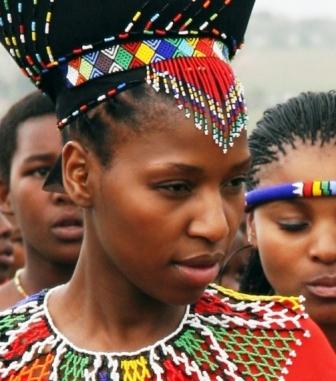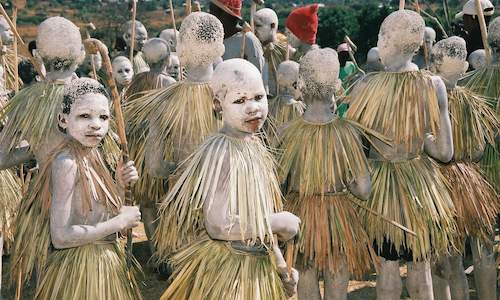Getting My South African Culture Today To Work
Getting My South African Culture Today To Work
Blog Article
The Definitive Guide for South African Culture Today
Table of ContentsThe 2-Minute Rule for South African Culture TodayThe 8-Minute Rule for South African Culture TodayThe 2-Minute Rule for South African Culture TodayAll About South African Culture TodayThe smart Trick of South African Culture Today That Nobody is Talking AboutThe Of South African Culture Today

The and sheep in addition to of people with guards and spears, in their paints. Hunter-gatherers can not live completely together with a worked out community and hence problems arose. When the San fought versus the BaNtu, they were at a big negative aspect not just in numbers however also in absence of tools.
The Europeans had horses and weapons. In this period, the number of San was greatly lowered. South African culture today. They battled to the fatality and preferred fatality to capture where they.Colonialism damaged the San migratory lifestyle, they were no more permitted to wander openly and trophy hunters destroyed the substantial herds of game that created their principal supply of food

Specific individuals might think leadership in particular balls in which they succeed, such as searching or recovery routines, but they can not achieve settings of basic impact or power. White colonists found this extremely complicated when they attempted to. Management amongst the San is maintained for those that have actually lived within that team for a very long time, who have attained a respectable age, and good character.
Land is normally had by a group, and civil liberties to land are usually acquired bilaterally. As long as an individual lives on the land of his team he keeps his subscription.
Some Of South African Culture Today
Although they do a reasonable quantity of trapping, the finest approach of hunting is with bow and arrowhead. The San arrow does not eliminate the animal instantly. It is the dangerous toxin, which eventually creates the death. In the instance of tiny antelope such as Duiker or Steenbok, a pair of hours might expire before fatality.
Water is difficult to come by, as the San are regularly on the action. Generally throughout the dry period, these migrants collect their wetness by scratching and pressing origins - South African culture today.
A caterpillar, reddish yellow in colour and about three-quarters of an inch long, called ka or ngwa is also used. The poisonous substance is extremely harmful and is substantially been afraid by the San themselves; the arrowhead points are consequently turned around so that the poisonous substance is securely had within the reed collar.
The poisonous substance is neuro toxic and does not contaminate the whole animal. The area where the arrowhead strikes is eliminated and gotten rid of, however the remainder of the meat is fit to eat. The impact of the toxin is not immediate, and the hunters often need to. The San likewise dug risks near the larger rivers where the game involved consume alcohol.
Getting My South African Culture Today To Work
These pitfalls were smartly covered with branches, which led to the animals strolling over the pit and falling onto the risk. When catching little animals such as hares, guinea chickens, Steenbok or Duiker, or fibre from plants were made use of. These had a running noose that strangled the pet when it entered the snare to accumulate the food that had been positioned inside it.
Aardvark openings are used by little dollar as a resting location to run away the midday sunlight. The hunter waited patiently behind the opening till the animal left.
A Biased View of South African Culture Today
If the ground is bare and open, he will certainly crawl on his stomach, often holding a tiny bush in front of him. Hunters lug a skin bag slung around one shoulder, containing personal items, toxin, medicine, flywhisks and extra visit site arrows. They may also carry a club to throw at and stun small game, a long probing stick to extract hares from you can check here their burrows or a stick to dig out Aardvark or Warthog.
According to San practice, they were welcome to share the dish and would certainly, in the future, have to respond in the same means. Plant foods, gathered by the womenfolk, are not shared but consumed by the woman's prompt household. The San use over 100 edible species of plant.
Youngsters stay at home to be watched over by those continuing to be in camp, however nursing youngsters are continued these gathering journeys, contributing to the load the ladies should lug. Up until lately, most amateur and specialist anthropologists checked out a rock painting of the San and believed that they could decipher it without any kind of problems.
When medicine man (medication men) repainted an Eland, they did not simply pay respect to a spiritual animal; they also used its essence (N!um). San rock paintings are located in rocky locations of the KwaZulu-Natal, Eastern Cape and the Western Cape districts.
The smart Trick of South African Culture Today That Nobody is Talking About
Manganese oxide and charcoal were used for black; white, which does not protect well, was probably obtained from bird droppings or kaolin. The blood of an Eland, a pet of great spiritual and symbolic significance, was often combined right into the colour pigments.
Human figures are stylized and shown as having long strides and the pets are either galloping or leaping, or, more discreetly, snapping a tail or twisting a neck. A lot of the paints have an underlying spiritual style and are believed to have been depictions of religious ceremonies and routines. The San belief system typically observes the supremacy of one effective god, while at the same time identifying the visibility of lower gods along with their partners and children.
Amongst some San, it is believed that functioning the dirt contrasts the world order developed by the god. The most vital spiritual being to the southern San was/ Kaggen, the trickster-deity. He developed many points, and shows up in various see here now misconceptions where he can be absurd or wise, tiresome or useful.

/ Kaggen is not always a hoping mantis, as the mantis is just one of his indications. He can also turn into an Eland, a hare, a serpent or a marauder - he can think several kinds. When he is not in among his animal types,/ Kaggen lives his life as an ordinary San.
The Single Strategy To Use For South African Culture Today
As soon as caught, the Eland is skinned and the fat from the animal's throat and collarbone is made right into a brew. The women of the people execute the Eland Bull Dancing where they copy the breeding behavior of the Eland cows.
Report this page